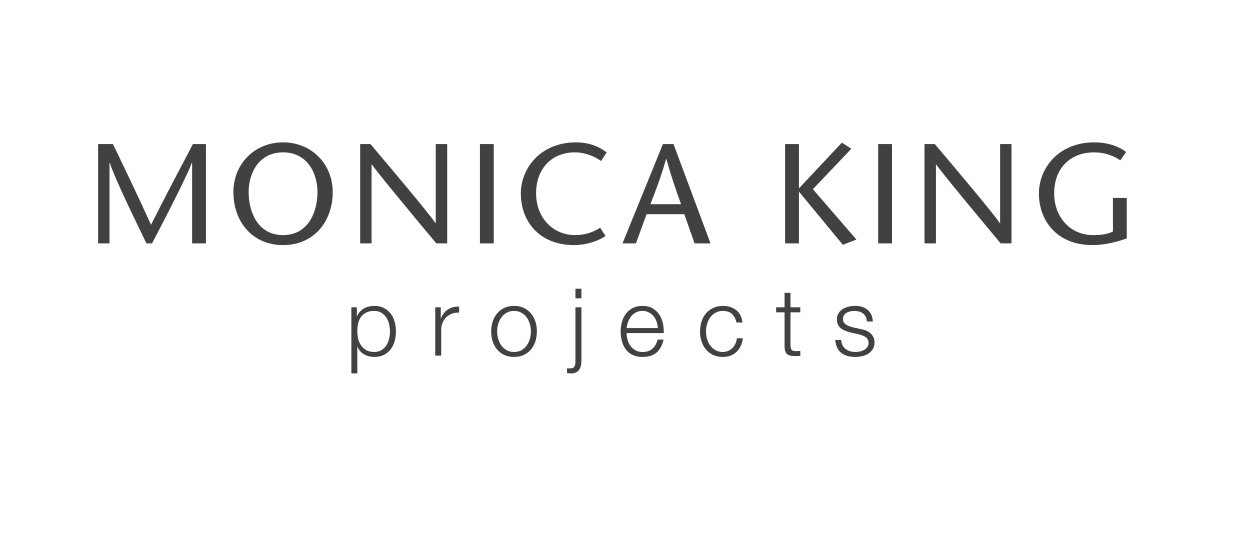WHITEHOT MAGAZINE
ACTUAL AND IMPLIED: NEW WORK BY GREGORY COATES GENTLY BRISTLES
By CORI HUTCHINSON
In a video interview with Post Sputnik, a video production boutique based in the artist’s home city of Allentown, Pennsylvania, Gregory Coates gloriously discusses his process under a sky or spotlight as a cigar burns in the ashtray in front of him. Smoke hazes the frame as Coates candidly considers materials and the notion of what he calls the “edit.” Coates defines “editing” as creating an installation in a white box gallery or traditional art zone that effectively modifies the space. The viewer is then able to deduce, first, what has been left behind and, secondly, what the artist has extracted in order to produce the work. The dual nature of Coates's edit as both presence and negation is felt by the Monica King Contemporary exhibition’s title: Actual and Implied. The video game language of “edit” as space modification is reinforced by the Coates’s emphasis on layered textures ranging from natural to artificial.
Working with deck brushes, leather handbags, and other mixed media, Coates develops a post-minimalist assemblage focused, broadly, on the relationship between the banal and conceptual. Each piece transforms into a gift with an individual dedication in a gesture both intimate and generous. The striking pigments used by Coates veer between organic (mud) and synthetic (acrylic). In Brushes for Christiane, a pure Yves Klein blue is heavily clotted in two vertical columns on deck brushes. The piece straddles painting and sculpture, especially when approached from its periphery. AND NOW, too, makes use of the Klein blue, this time combining it with a dark brown. The application of paint in AND NOWexaggerates, more than Brushes, the pointillism of deck brush tips when viewed straight-on. The combination of earth tones and hyper-blue in this piece lands someplace between a fantastical animal’s pelt and an arcane flag.
Under Reconstruction, also flag-like and punctured numerously through the horizontal, indicates flux in both its title and red, white, and blue acrylic smattering. The application of rusting agents to the deck brushes throughout the exhibition accelerates their re/decomposition. These works on the whole resist static as a concept, but, like a thick layer of carpet, probably physically produce it. On the walls, the deck brush spikes are like urchins and their shadows are soft-edged as fuzz, asking the view to consider which is actual and which is implied.
In HERE, the artist recalls Ad Reinhardt’s observed spectrum of the color black: old, fresh, lustrous, dull, in sunlight, and in shadow. Coates transfers this notion of the dynamic 2-D black to 3-D. The black of HERE contains peaks and valleys, manifesting its own highlights and shadows between the lines of the brush tips, producing a shimmer both ordinary and cosmic. Like HERE, My Big Brown Peace names its own location, asserting brown as the most ubiquitous color in the room by its sheer scale on one full wall.
In the three works from the Fetish series, Coates explores the magical potential of handbags from his own lifetime attention to the purses carried by his wife, mother, and sisters. Each a unique object, two are halfway coated in mud and other organic material and the third is adorned with feathers. These objects are not corrupted by their coating, but rather uplifted. All appear still functional as an accessory: their handles are intact and, besides speckles of mixed-media, unedited. The utility of the found object is preserved despite its elevation to the realm of contemporary art. JuJu Inside (Barbara) is like the purse of an angel, wearing all of its mystery on the exterior, almost in-flight.
The Cornrows series emerges from the artist’s personal experience wearing the titular traditional African hairstyle to a private Catholic school in his adolescence. The materials used pay homage to the professional domestic labor of his grandmother, Beatrice Coates, and the 1986 Joseph Beuys incident in which the capital value of a piece was “ruined” by a museum janitorial employee when she scrubbed off an integral grease stain. The deck brush work, then, engages with high art from the position of that cleaner. Brushes for Beuys, with its playful fuchsia streak, furthers this thread. Invoking these problematic experiences surrounding both domestic labor and Black aesthetics threatens Beuys’s own observation that comprehending art is something everyone has to do for themself. However, it does so in a way that is fresh and unlike the literal messiness of, for example, Tracey Emin’s bed piece, which relies on the context of the high art space for it to appear disruptive. Coates’s work texturally tempts the viewer to touch it with the same immediate delight as one enters a car wash, but braids throughout the exhibition a deep and tangled historical significance. WM
DECEMBER 6, 2019

